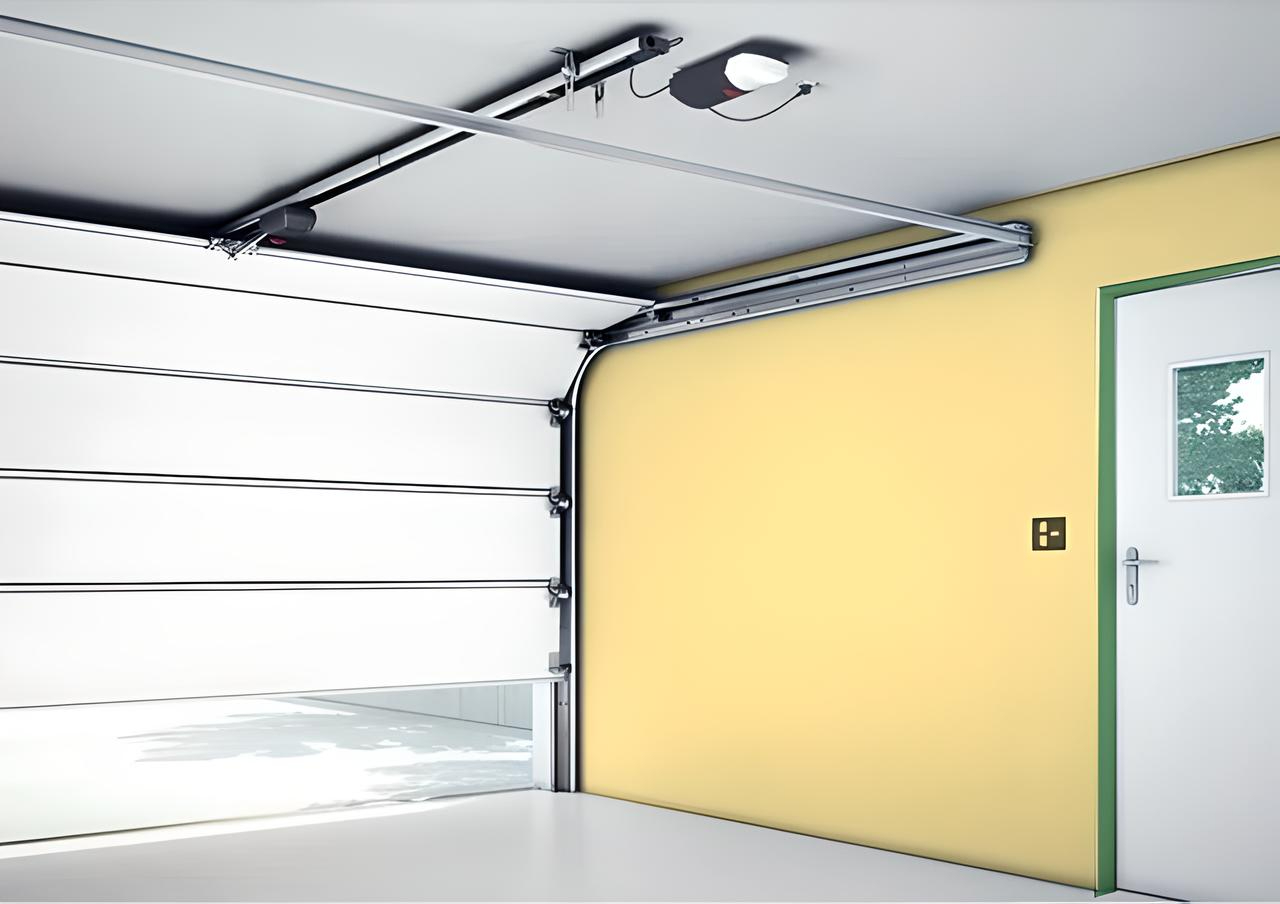Garage Door Low Clearance

Is your garage’s low ceiling causing frustration when it comes to installing a garage door? You’re not alone. Many homeowners face the challenge of installing a garage door in a space with minimal clearance. Low clearance garages often limit your options, making it seem like finding a practical, efficient, and aesthetically pleasing solution is next to impossible. But don’t worry! With the right approach, you can install a garage door that works perfectly in your space without compromising on functionality or style.
In this comprehensive guide, we’ll explore the key considerations when dealing with low clearance garage door installation. From understanding the basics of headroom and clearance requirements to exploring the best door types, hardware, and installation tips, you’ll find everything you need to overcome this challenge.
Understanding Garage Door Clearance
Before diving into specific solutions, it’s essential to grasp the concept of garage door clearance. In garage door terminology, headroom refers to the space between the top of your garage door opening and the ceiling. This space is necessary to accommodate the hardware, such as tracks, springs, and openers, that allows the garage door to open and close smoothly.
Common Headroom Requirements
Most standard garage doors require 12-18 inches of headroom to operate efficiently. However, many older homes or garages with unique architectural designs may not offer this much space. When your garage provides less than 12 inches of clearance, it’s considered to have low clearance, which means you need to explore specific low-clearance door options and hardware solutions.
Choose the Right Type of Garage Door
The first step in solving low clearance issues is selecting the right type of garage door. Certain garage door types are better suited for tight spaces, so it’s crucial to know what will work best for your situation.
Roll-Up Garage Doors
If you’re dealing with a low ceiling, a roll-up garage door might be your best bet. Roll-up doors consist of multiple narrow horizontal slats that coil into a compact roll above the garage opening when the door is opened. Because the door rolls into itself, it requires minimal overhead space. Roll-up doors are especially popular in commercial settings but can be an excellent solution for residential garages with limited clearance.
- Advantages: Minimal overhead space required, durable, space-efficient.
- Disadvantages: More expensive than traditional doors, industrial look may not appeal to all homeowners.
Sectional Garage Doors
Sectional garage doors are made of several horizontal panels that are connected by hinges. When opened, these panels slide up and fold back along tracks on the ceiling. While they require more headroom than roll-up doors, sectional doors can still be an effective solution in low-clearance situations, especially when paired with low-profile hardware.
- Advantages: Widely available, customizable, suitable for moderate low-clearance situations.
- Disadvantages: Requires more space than roll-up doors, but still adaptable with low-headroom kits.
Side-Hinged Garage Doors
For garages with extremely low clearance, a side-hinged garage door can be a practical solution. These doors open outward like traditional double doors, completely eliminating the need for overhead space. Side-hinged doors can be a great choice if you have no overhead clearance but plenty of front space to allow for the doors to swing open.
- Advantages: No headroom required, easy to maintain, can complement older or traditional homes.
- Disadvantages: Requires ample space in front of the garage, not ideal for modern architectural styles.
Low-Profile Hardware for Low Clearance Garages
After selecting the right door type, the next key consideration is the hardware that will allow your garage door to operate smoothly in a limited space. Low-clearance hardware options are specifically designed for these situations.
Low-Headroom Tracks
For sectional or roll-up garage doors, low-headroom tracks are an essential component. These tracks are designed to fit into tight spaces and allow the door to slide along the ceiling without needing the usual amount of clearance. Instead of using a traditional track system, low-headroom tracks feature a dual-track configuration, where one track guides the top section of the door and another accommodates the bottom sections. This setup allows the door to function smoothly with less headroom.
Compact Rollers
Using compact rollers can also help optimize the use of space. These smaller rollers allow the garage door to open and close within a narrower space compared to standard-sized rollers. When paired with low-headroom tracks, compact rollers ensure that your door operates without issue in a tight garage space.
Rear Mount Torsion Springs: A Space-Saving Solution
Springs play a significant role in the operation of a garage door, and their placement can affect how much headroom is required. Most garage doors use torsion springs mounted at the front of the garage, just above the door. However, in low-clearance garages, rear mount torsion springs can be an excellent alternative. These springs are installed at the back end of the horizontal tracks instead of the front, which saves precious inches of headroom.
- Advantages: Maximizes space, provides smooth operation.
- Disadvantages: May require professional installation, as rear-mounted systems are more complex.
Adjust the Ceiling Mounting for Garage Door Openers
Your garage door opener’s placement is another factor to consider when dealing with low headroom. Traditional ceiling-mounted openers may require more space than you have available, but there are workarounds to this issue.
Lowering the Mounting Height
In some cases, you can resolve clearance issues by simply lowering the mounting height of the garage door opener. By moving the opener closer to the ground, you free up space above the door for it to operate along the tracks. This can be particularly useful if your opener’s motor is taking up too much overhead room.
Ceiling-Mounted vs. Wall-Mounted Openers
For even more space-saving options, consider switching to a wall-mounted garage door opener. Unlike traditional ceiling-mounted openers, a wall-mounted opener is installed on the side of the garage, freeing up ceiling space entirely. These openers, also known as jackshaft openers, can be a great solution for low-clearance garages because they operate without an overhead track system.
- Advantages: Saves ceiling space, quieter operation, sleek design.
- Disadvantages: More expensive than traditional openers, may not be compatible with all garage doors.
Remove Obstructions in Your Garage
Low headroom is often made worse by obstructions like ductwork, pipes, or beams that run across the ceiling. If possible, work with a contractor to relocate or adjust these elements to create more space for your garage door.
- Identify Obstructions: Start by examining your garage ceiling and identifying any structural obstructions. Pipes, electrical wiring, and HVAC ducts are common obstacles that reduce headroom.
- Relocate or Adjust: If these elements are getting in the way, consider relocating or adjusting them. While this may require some additional work, clearing obstructions can greatly improve your available headroom.
Consider Retrofit Kits for Low Clearance
Many garage door manufacturers offer retrofit kits specifically designed to accommodate low-clearance garages. These kits usually include modified tracks, springs, and other essential hardware that enable garage doors to operate in tight spaces. If you’re unable to find a standard garage door setup that works for your space, a retrofit kit may be the perfect solution.
- Benefits: Customized to fit low-clearance spaces, usually more affordable than custom doors.
- Drawbacks: May not be compatible with all garage door styles, professional installation may be required.
Consult a Garage Door Professional
If you’re feeling overwhelmed or your garage presents particularly complex clearance challenges, it may be time to bring in a professional. A skilled garage door installer will have the experience and tools necessary to evaluate your garage’s dimensions and recommend the best solutions. Don’t hesitate to seek expert advice, especially if structural changes or custom solutions are required.
Installation Tips for Low Clearance Garage Doors
When installing a garage door in a low-clearance garage, accuracy is crucial. Start by measuring your garage’s headroom, side room, and backroom to ensure that you select a door and hardware that will fit properly. Additionally, always follow the manufacturer’s instructions to ensure safe and effective installation.
Safety Considerations During Installation
Garage doors are heavy and operate under significant tension, making installation potentially dangerous if not done correctly. If you’re not confident in your ability to install the door safely, it’s always best to hire a professional to handle the job.
Common Mistakes to Avoid in Low Clearance Garage Door Installation
- Overlooking Accurate Measurements: Before purchasing a door, ensure that you have accurately measured your garage’s dimensions, including headroom, side room, and backroom.
- Ignoring Manufacturer Instructions: Always follow the guidelines provided by the manufacturer for proper installation, as failing to do so could lead to poor performance or even safety hazards.
Garage Door Maintenance for Low Headroom Garages
Once your garage door is installed, regular maintenance is key to ensuring smooth operation and prolonging its lifespan. This is particularly important for low-clearance setups, where there is less room for error. Regularly inspect the door’s tracks, springs, and rollers for wear and tear, and lubricate moving parts to keep everything running smoothly.
Benefits of Low Clearance Garage Door Solutions
Choosing the right solutions for a low-clearance garage offers several advantages, including:
- Space Efficiency: Maximize your garage space while still having a functional door.
- Enhanced Functionality: Enjoy smooth, reliable garage door operation even in tight spaces.
- Aesthetic Appeal: Find a garage door that complements your home’s design without compromising on style.
Conclusion
Dealing with a low-clearance garage doesn’t mean you have to sacrifice functionality or design. By selecting the right type of door, using low-profile hardware, and exploring space-saving solutions like rear mount torsion springs or wall-mounted openers, you can enjoy a fully functional, efficient, and stylish garage door even in the tightest spaces. Whether you tackle the installation yourself or consult a professional, these strategies will help you make the most of your garage space without the headaches!
FAQs
- What is the minimum clearance needed for a garage door?
Most garage doors require 12-18 inches of clearance above the opening, but low-clearance options are available for tighter spaces. - Can I install a garage door in a low-ceiling garage?
Yes! With the right type of door and hardware, you can easily install a garage door in a low-clearance space. - What are retrofit kits?
Retrofit kits are special hardware kits designed to help garage doors operate in low-clearance spaces. - Should I hire a professional for low-clearance garage door installation?
If you’re dealing with complex obstructions or have limited experience, it’s often best to consult a professional


